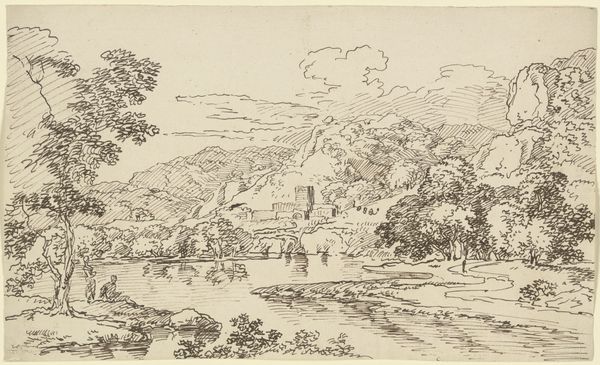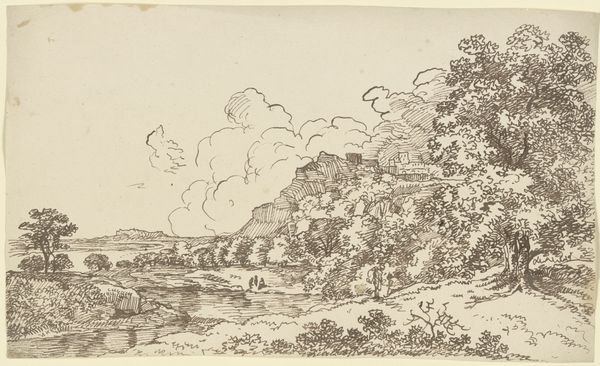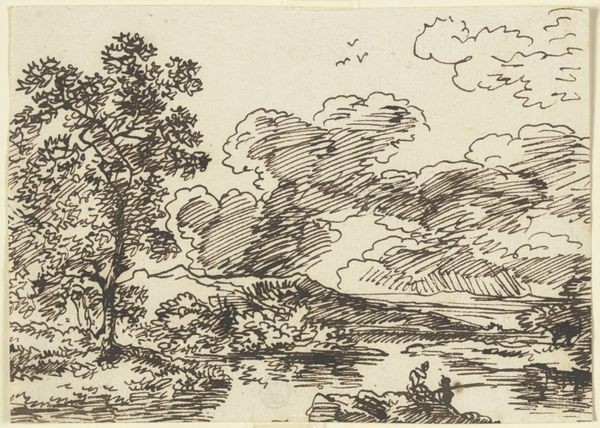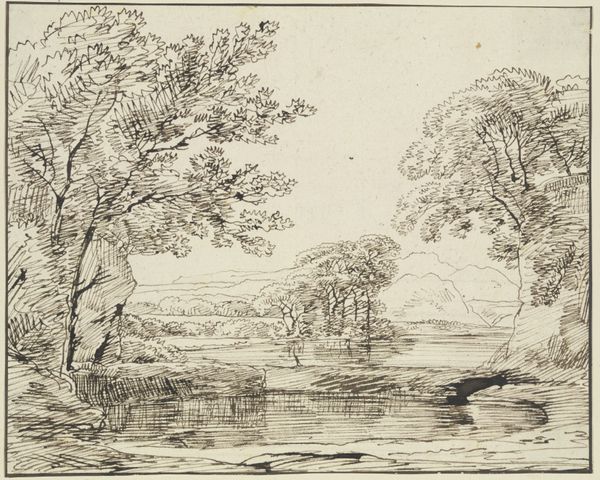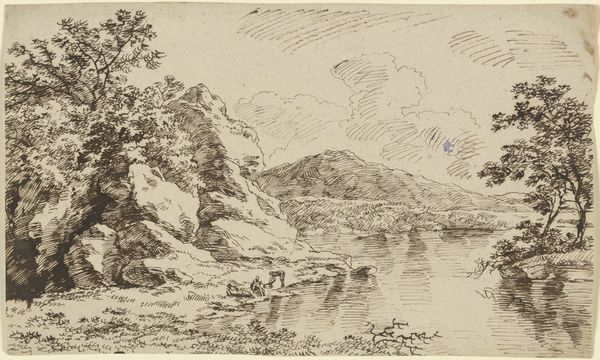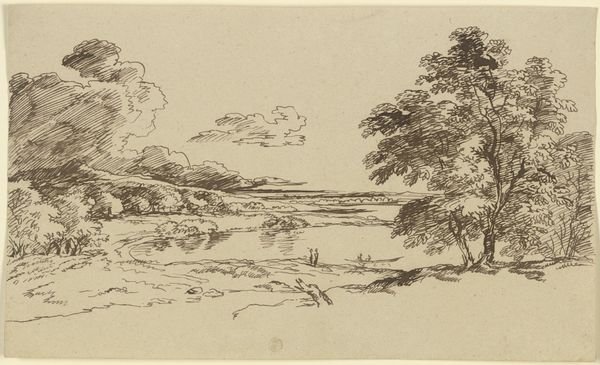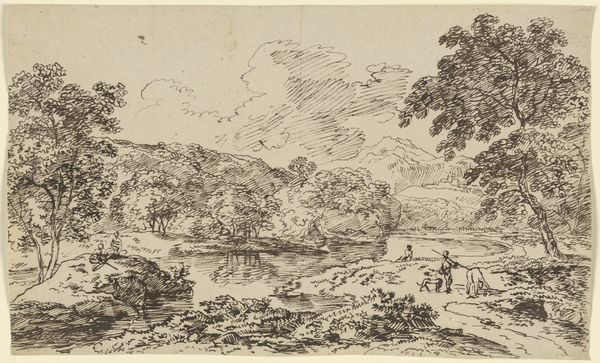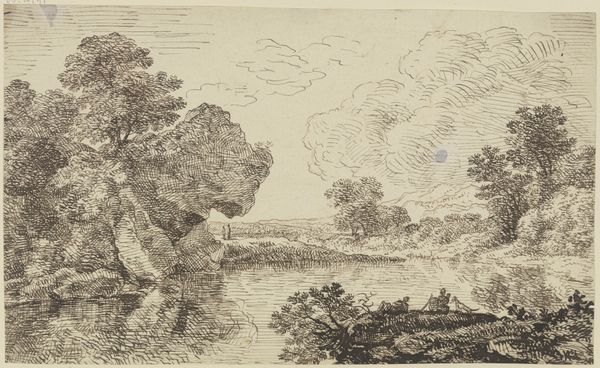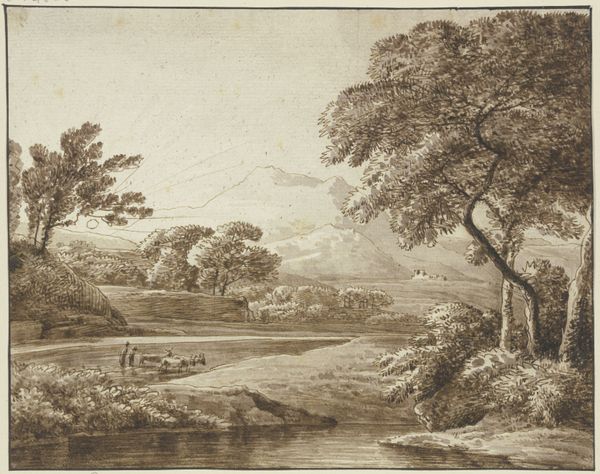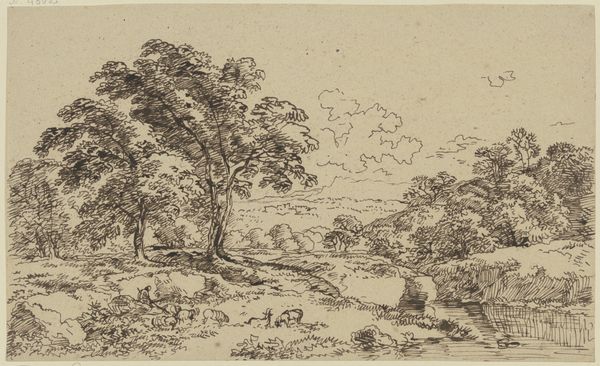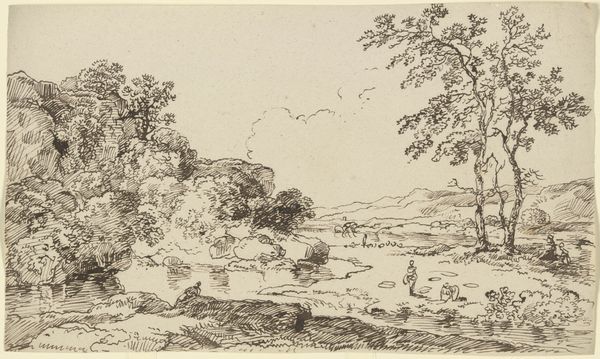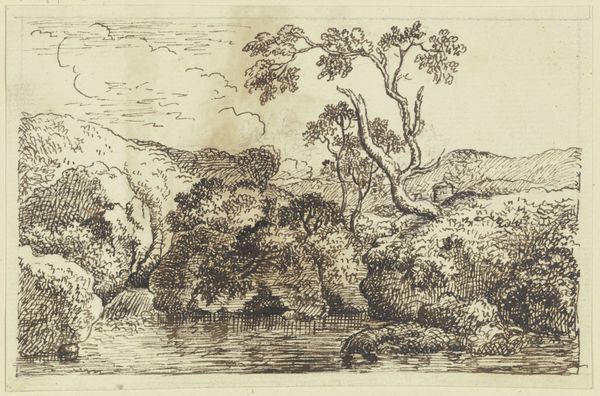
drawing, etching, dry-media, ink, pen
#
pen and ink
#
drawing
#
ink drawing
#
pen drawing
#
etching
#
landscape
#
figuration
#
dry-media
#
ink
#
15_18th-century
#
line
#
pen
#
realism
Copyright: Public Domain
Editor: Looking at Franz Kobell's "Seelandschaft, in der Ferne ein Gebirgszug," a pen and ink drawing, there's a striking contrast between the detailed foreground and the hazy, almost dreamlike background. The composition, divided horizontally, with these rather dark trees on each side and mountains in the distance, has a stillness about it. How might we interpret the historical context of such a landscape piece? Curator: That stillness is crucial. Consider that Kobell was working in the late 18th century, a period witnessing the beginnings of industrialization and massive social upheaval. These idyllic landscapes, though seemingly simple, are often infused with a longing for a simpler, pre-industrial past. The public was changing, and its sense of itself in relation to nature. What kind of patron do you imagine commissioning this piece, and what values might they hold? Editor: Perhaps a member of the rising middle class, seeking a connection with a rural ideal? They want the charm, but they also want art that feels familiar. Curator: Precisely. The "realism" isn't necessarily about photographic accuracy; it's about portraying an accessible, morally sound view of nature, that could become very popular, both in personal display and through public exhibitions. The mountains become symbols of stability, the grazing animals represent a sustainable harmony, and the framing by the trees brings these all closer to the viewer. The use of pen and ink further lends the artwork an accessible and relatable quality through relatively available materials, making the view both beautiful and replicable. But how does that impact you? Editor: I see it now; it’s not just a pretty picture, but a carefully constructed statement. A romantic view. Curator: Exactly. These images were essential in shaping how people understood and valued the landscape – influencing conservation efforts and even tourism in later years. Editor: I see that thinking about who was looking at this and how it impacted the landscape provides so much insight, especially as this piece invites an almost picturesque interaction between landscape, history, and medium.
Comments
No comments
Be the first to comment and join the conversation on the ultimate creative platform.
